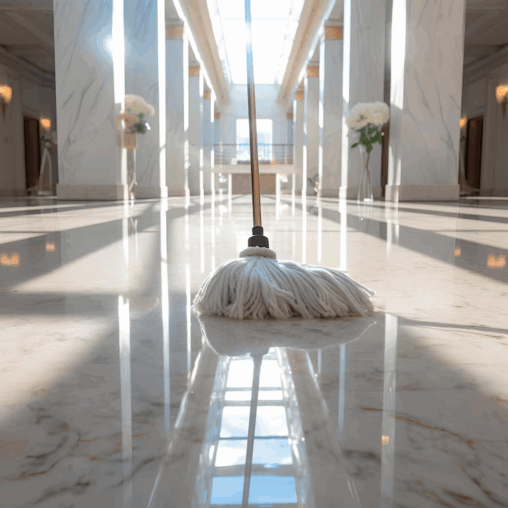Ceramic and porcelain floors are distinguished by a good look, strength, and durability. If your household is a bustling one, or need to keep commercial premises spotless, then these tile floors are a stylish option. However, to maintain their finish and cleanliness, maintenance is necessary.
In this guide, we’ll take you through a practical approach to ceramic floor cleaning and porcelain floor cleaning, which we will put in daily, weekly, and monthly routines. A set routine in cleaning makes the exercise less tedious, avoids long-terms damages and ensures that your tile is beautiful as when it was installed.
The Importance of a Cleaning Routine
Ceramic and porcelain tiles do not absorb moisture or wear very easily, but they can lose their shine if they are not taken care of. Normal daily dust, spills of food and regular foot traffic can lead to the accumulation of grime on surfaces and darkening of grout. Bacteria and allergens can also be accumulated without regular cleaning, especially in grout lines and corners.
Routine maintenance ensures prevention of both the surface and the structure of the floor from harm. It also reduces such deep staining and discolouration, which calls for expensive restoration or replacement later on.
Daily Cleaning Routine
The best way of preventing build up is to take care of your ceramic or porcelain floor a little every day. Begin with a light sweep or vacuum. Shoes can inflict sandpaper-like scouring on tiles in the form of dirt, dust and grit, which dull a surface finish over time. A soft broom or vacuum cleaner with the hard-floor setting will do the work effectively, without scratching the tile.
The best way to go about cleaning spills is by cleaning it immediately. Ceramic and porcelain tiles do not absorb liquid easily, but if spills remain for too long on the surface, especially acidic or greasy ones, it may leave a residue or colour grout. All you need to do is to clean food, mud or any kind of a mess with a damp microfiber cloth for a quick and safe cleaning.
Weekly Cleaning Routine
Every week is not the time for surface cleaning; sometimes it’s good to get deep. Mop the floor after sweeping or using a vacuum cleaner using a pH-neutral tile cleaner. They have been made specifically for use in ceramic floor cleaning and porcelain floor cleaning and if applied as specifically instructed by the manufacturer, they will go deep into the floor without hurting the tile’s final finishing and your skin.
One should use a microfiber or a chamois-style of mop which does not just move dirty water around. Rinse the floor after mopping to remove some of the cleaning product left. This prevents a boring, sticky film from forming. Focus on the grout lines while cleaning on a weekly basis. For tougher stains, a paste with baking soda and water will be helpful for lifting stains without harming the tile or grout.
Monthly Deep Cleaning Routine
While the daily and weekly routine is essential for keeping your floor in a perfect state, monthly deep cleaning helps to revitalize and preserve it. This is particularly important in busy areas or areas with children and pets.
The use of a steam mop is one of the best ways of cleaning monthly. Steam is very effective when it comes to cleaning dirt off textured tiles and cleans the surface from chemicals. It is especially appropriate to porcelain floor cleaning, as porcelain’s dense makeup stands up well to heat and moisture. Just ensure that your tiles and the grout are well sealed before using the steam so as to avoid any water damage.
A Note on Ceramic vs Porcelain
Ceramic and porcelain tiles look almost the same and need pretty much the same cleaning; there are only several specificities that should be mentioned. Porcelain is denser and less porous, meaning that it will be a little more resistant to stains and moisture. It is widely applied to such spaces as bathrooms, kitchens or entrance to greater weatherability.
With that said, the two types enjoy the same systematic cleaning routine. The difference in attention brought by the sealing or deep cleaning joints may be the largest and given the nature, porcelain may require a bit less maintenance because of its natural resistance.
Final Thoughts
Ceramic and porcelain floors are made to last but that doesn’t mean that they are maintenance free. Regular and smart cleaning schedule is your biggest ally against losing your investment. If you break your efforts into daily, weekly, and monthly activities, ceramic floor cleaning and porcelain floor cleaning enacts as one of the aspects of taking care of your home or facility.
In a few minutes every day and a little deeper focus every week and month, you can have spotless floors that remain shiny and do not get damaged easily and add to the overall look of your space.





